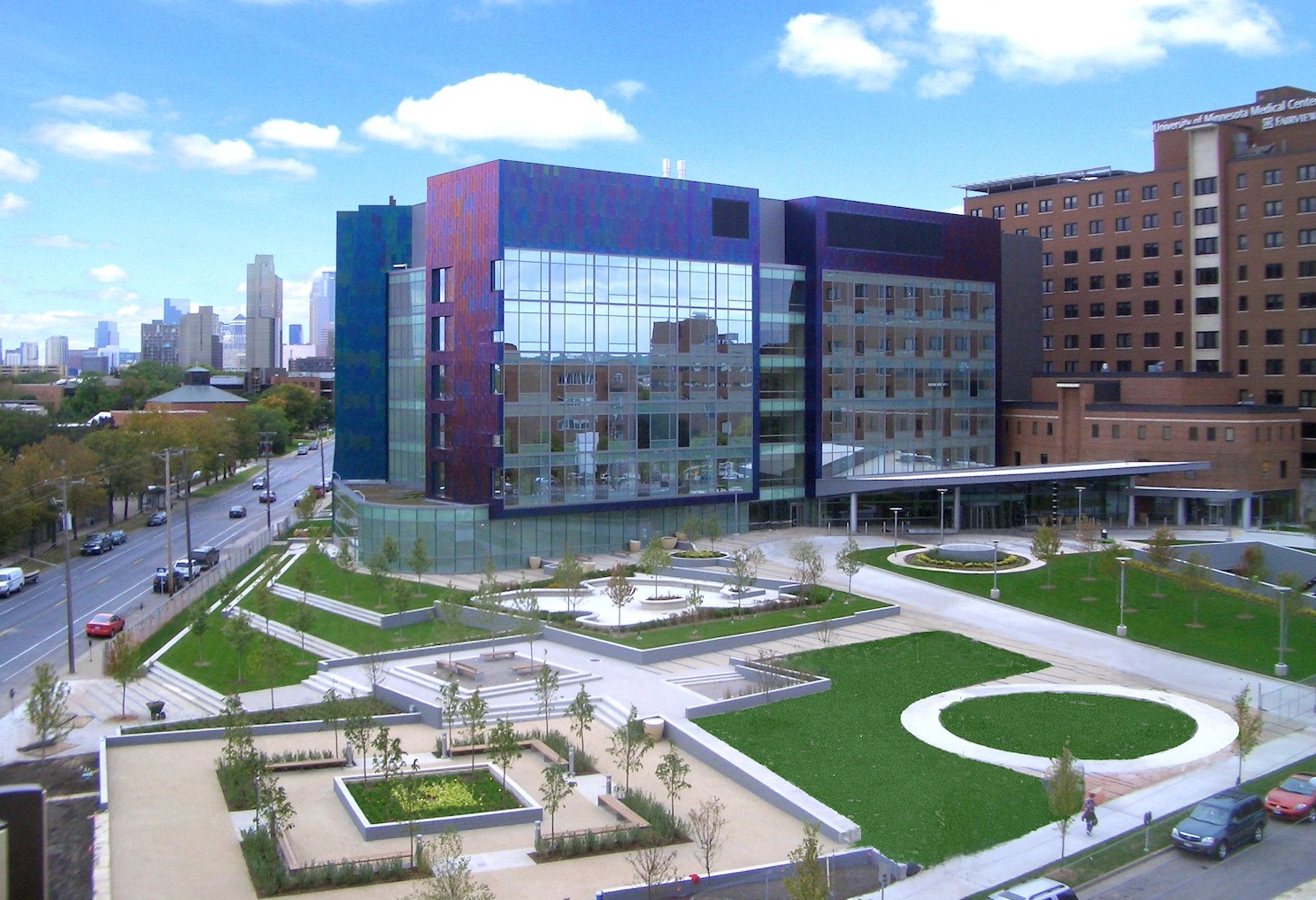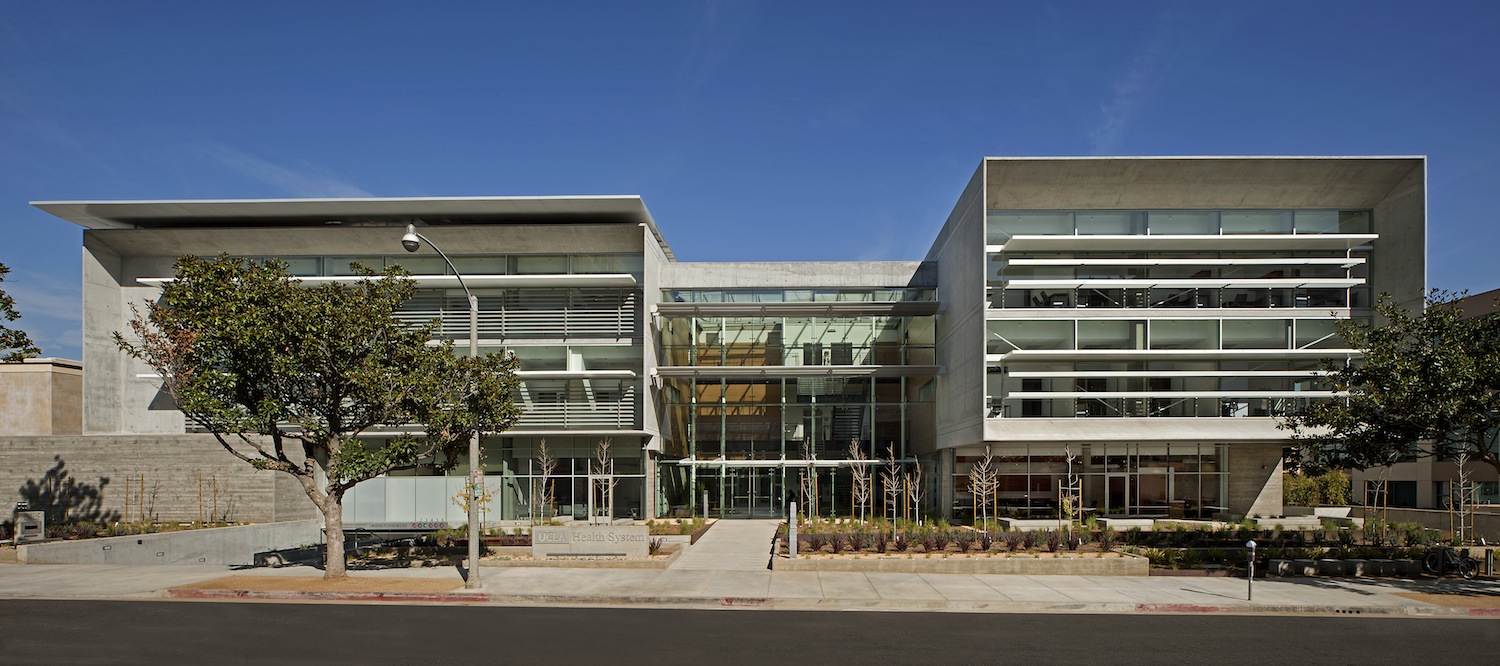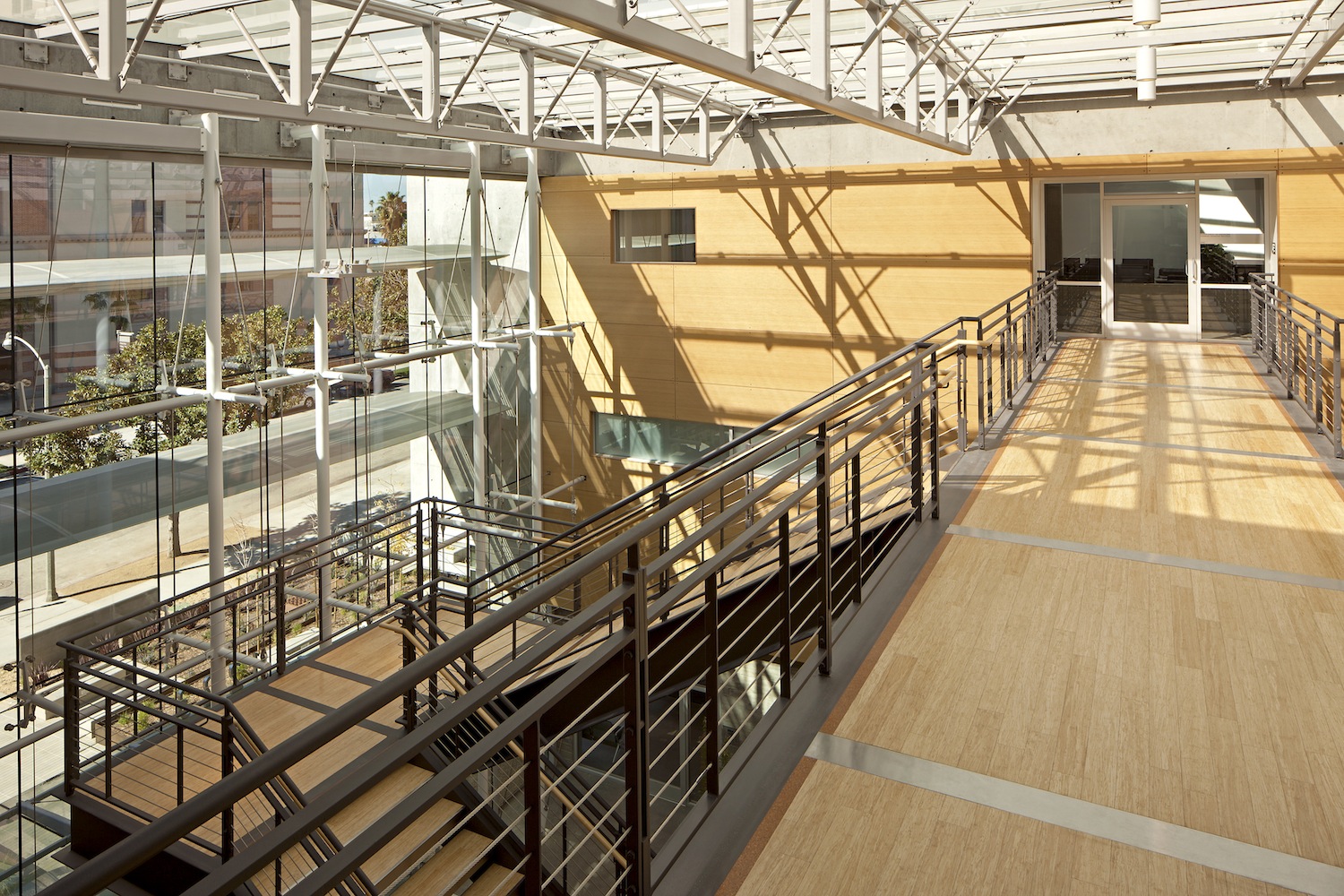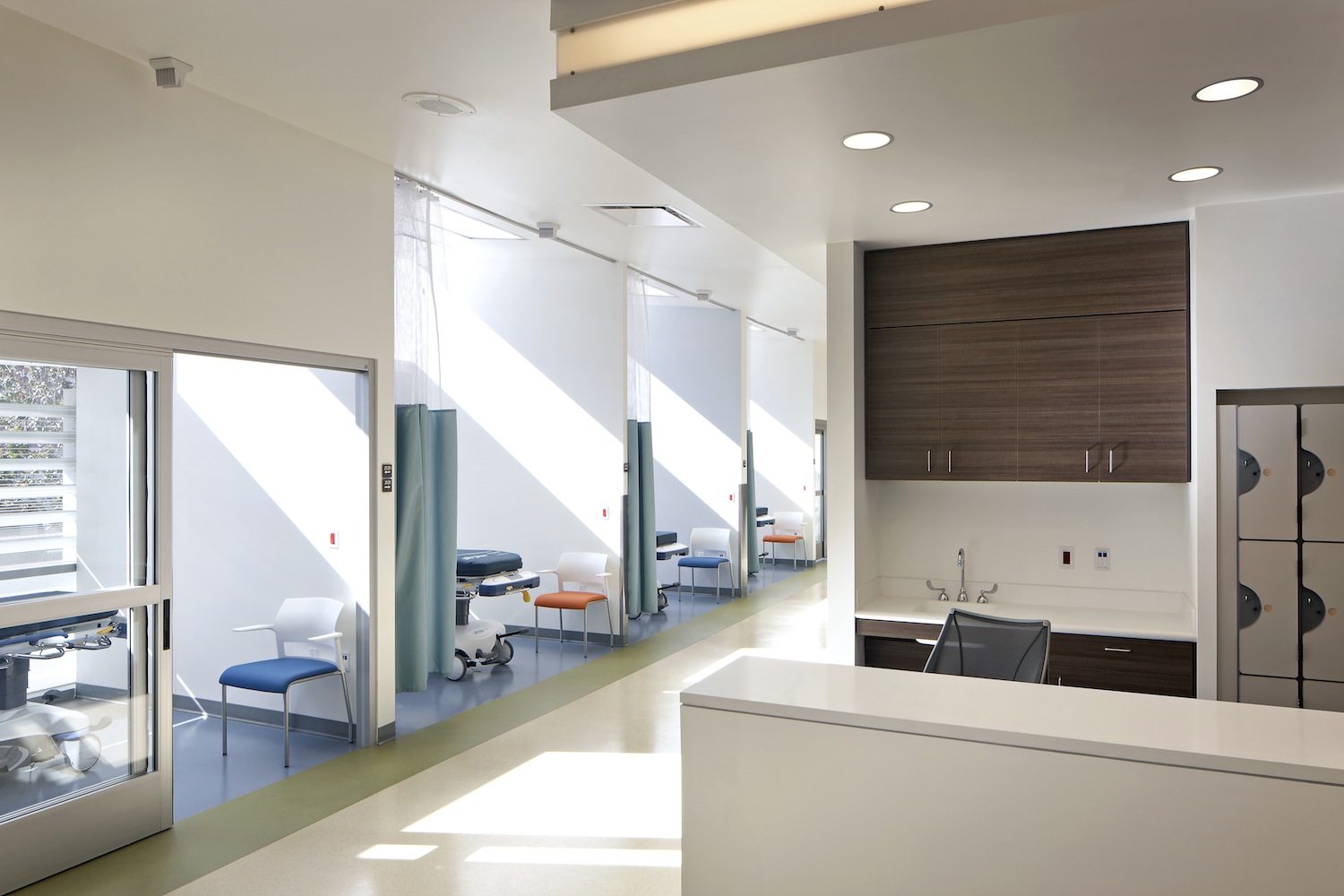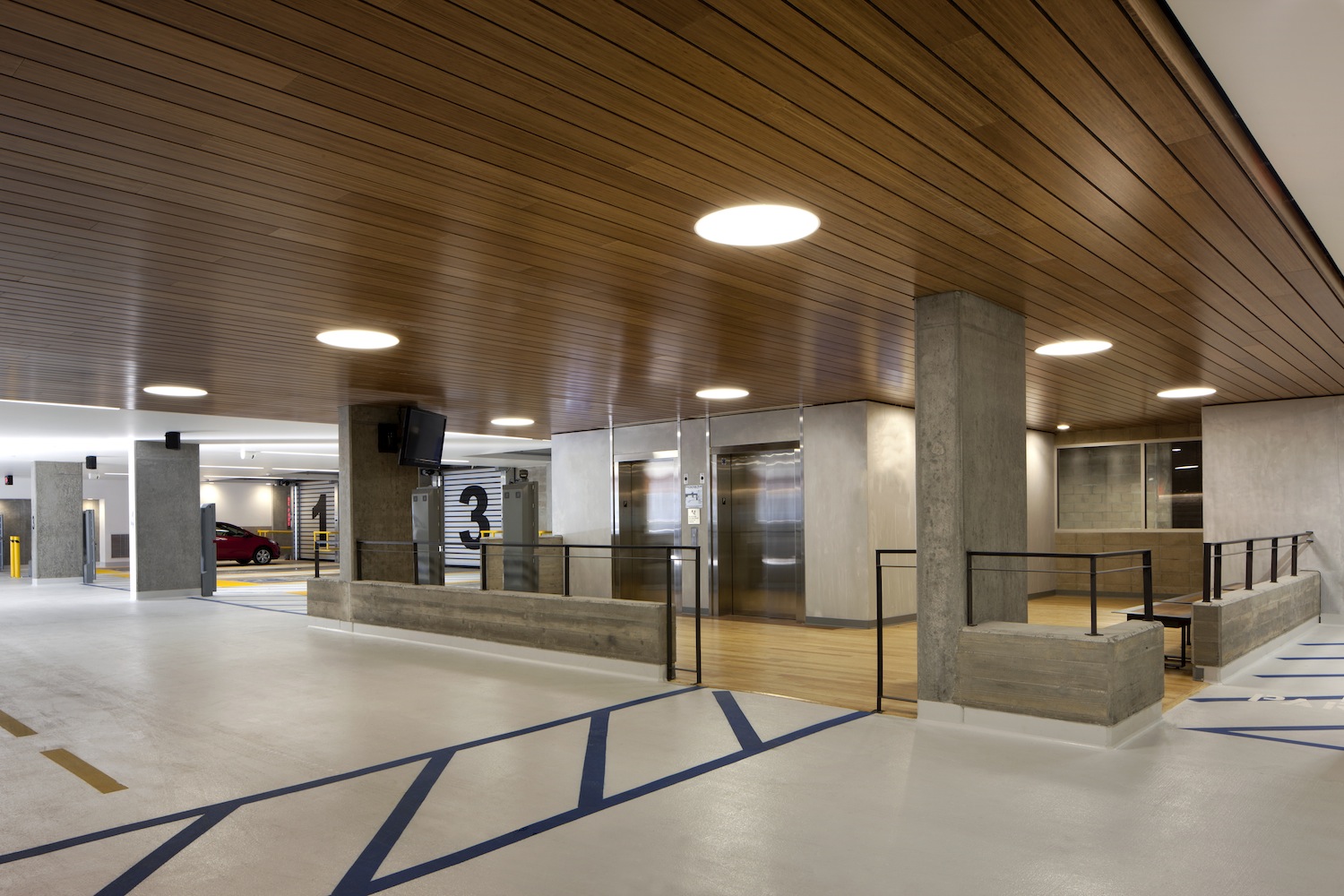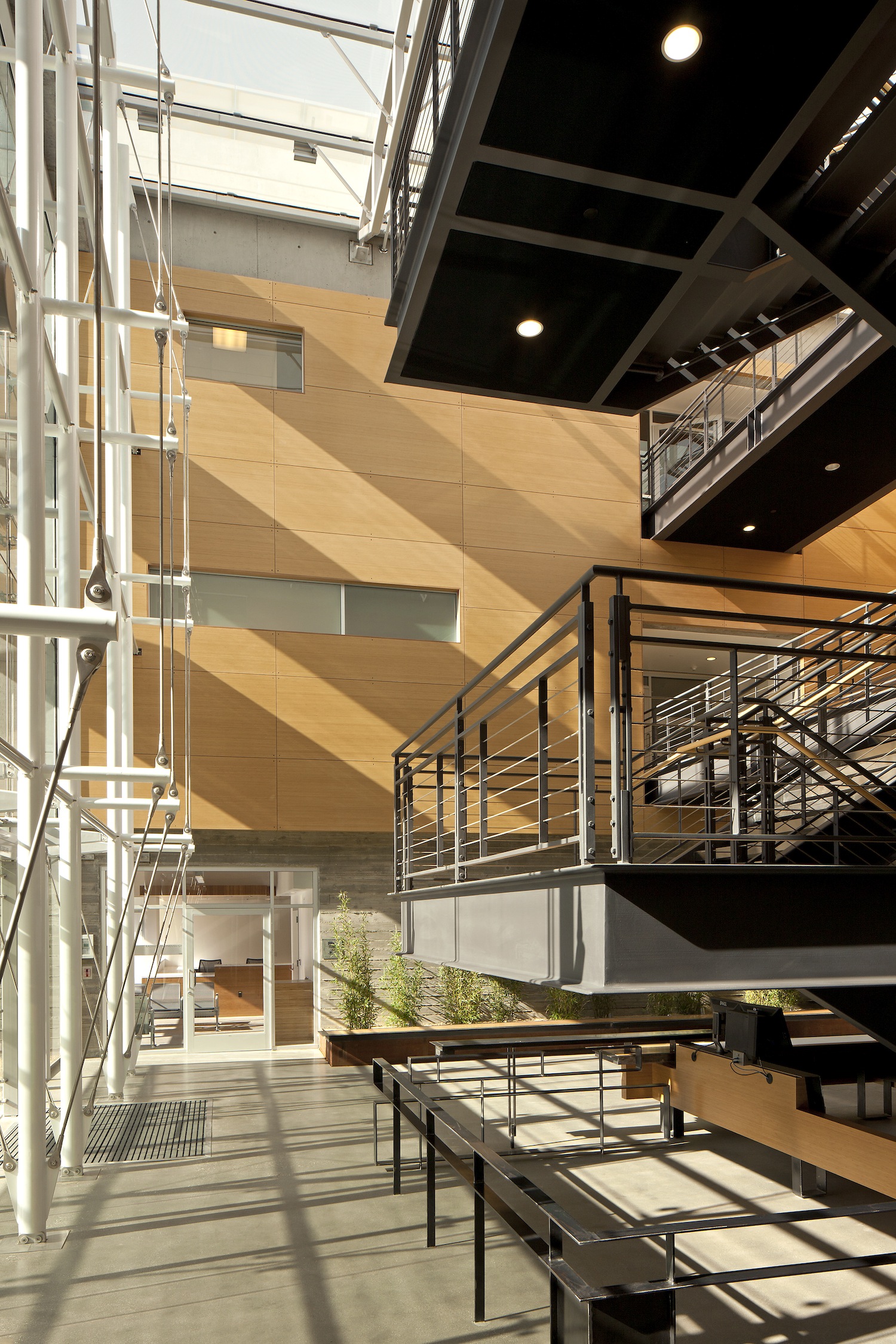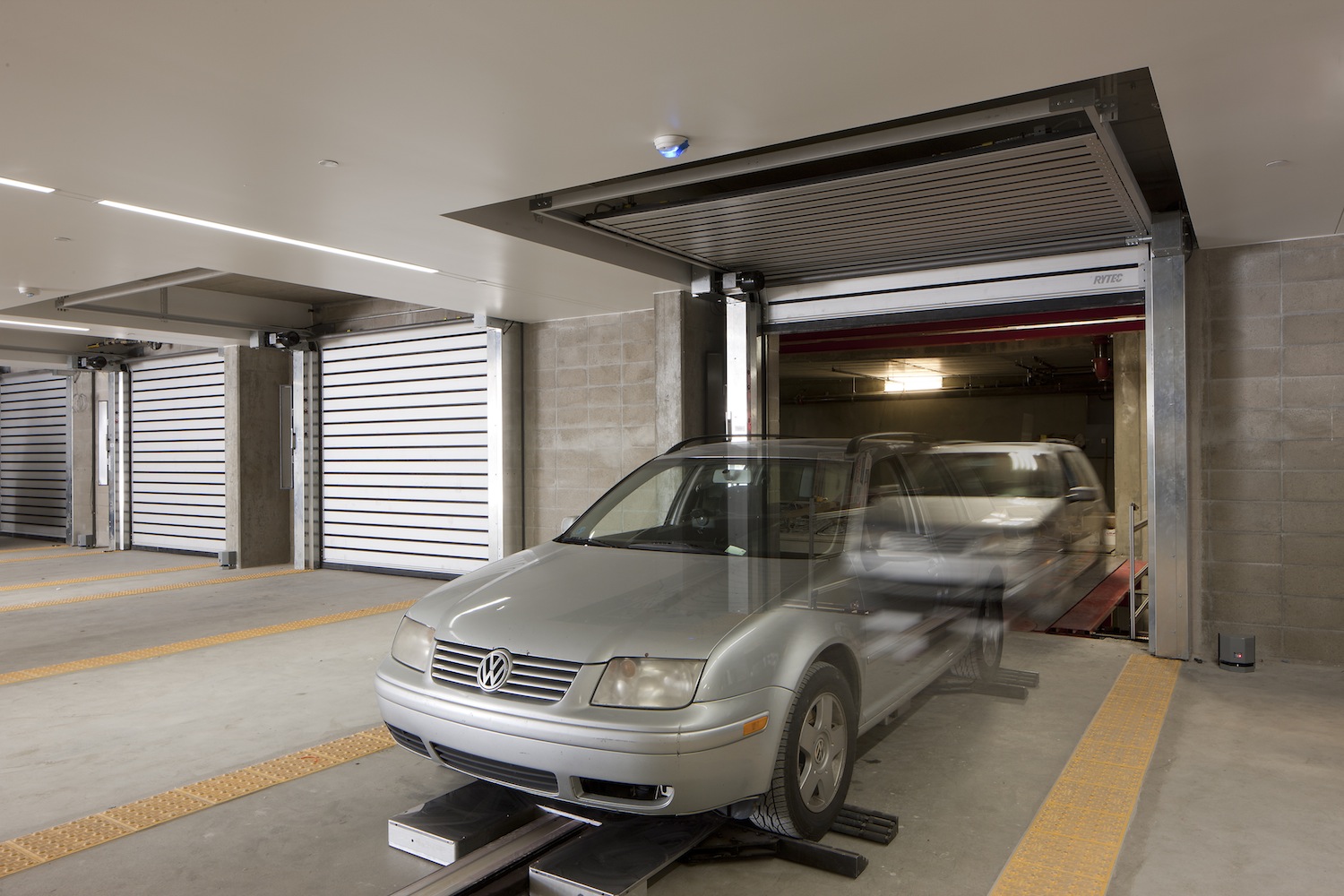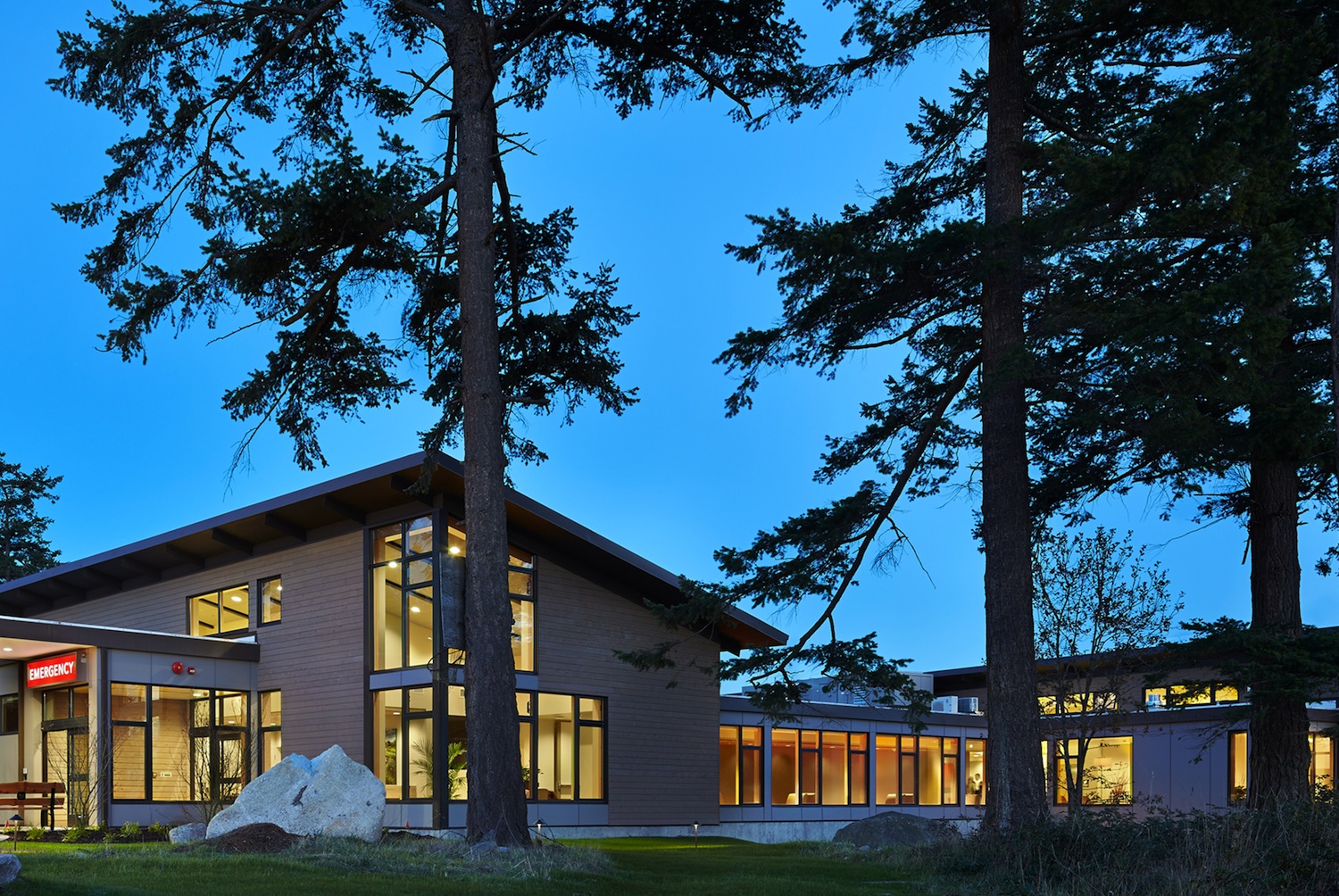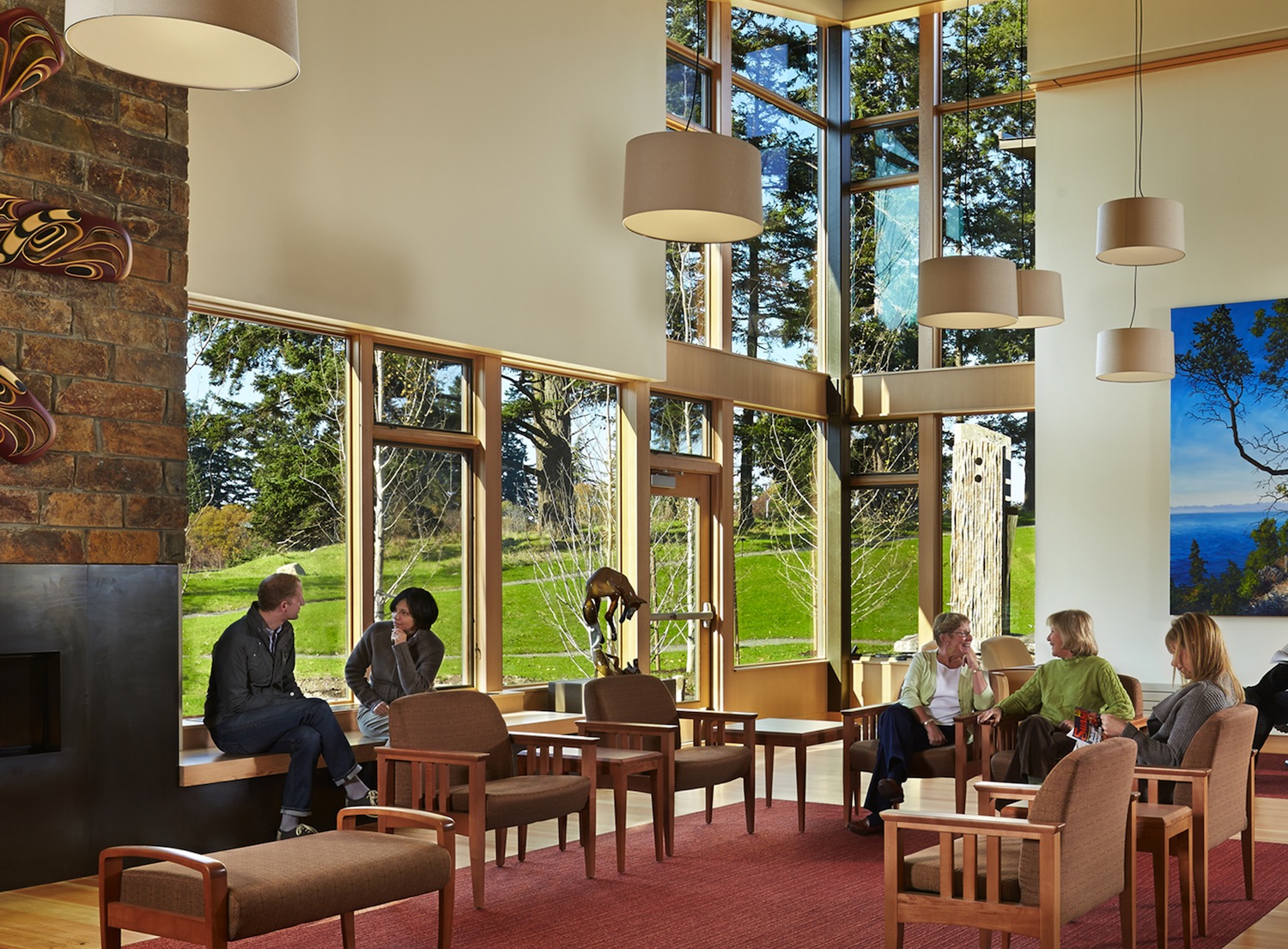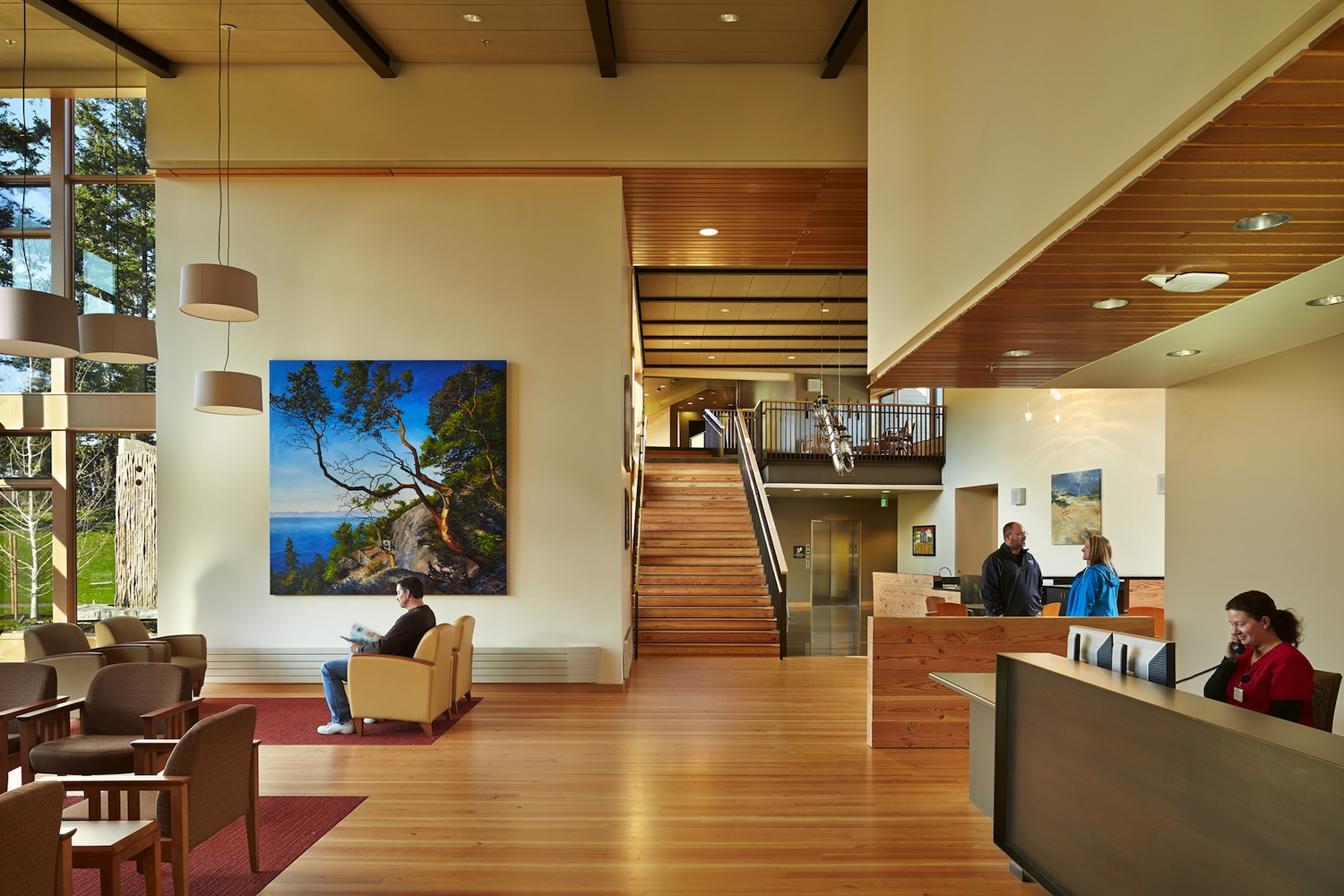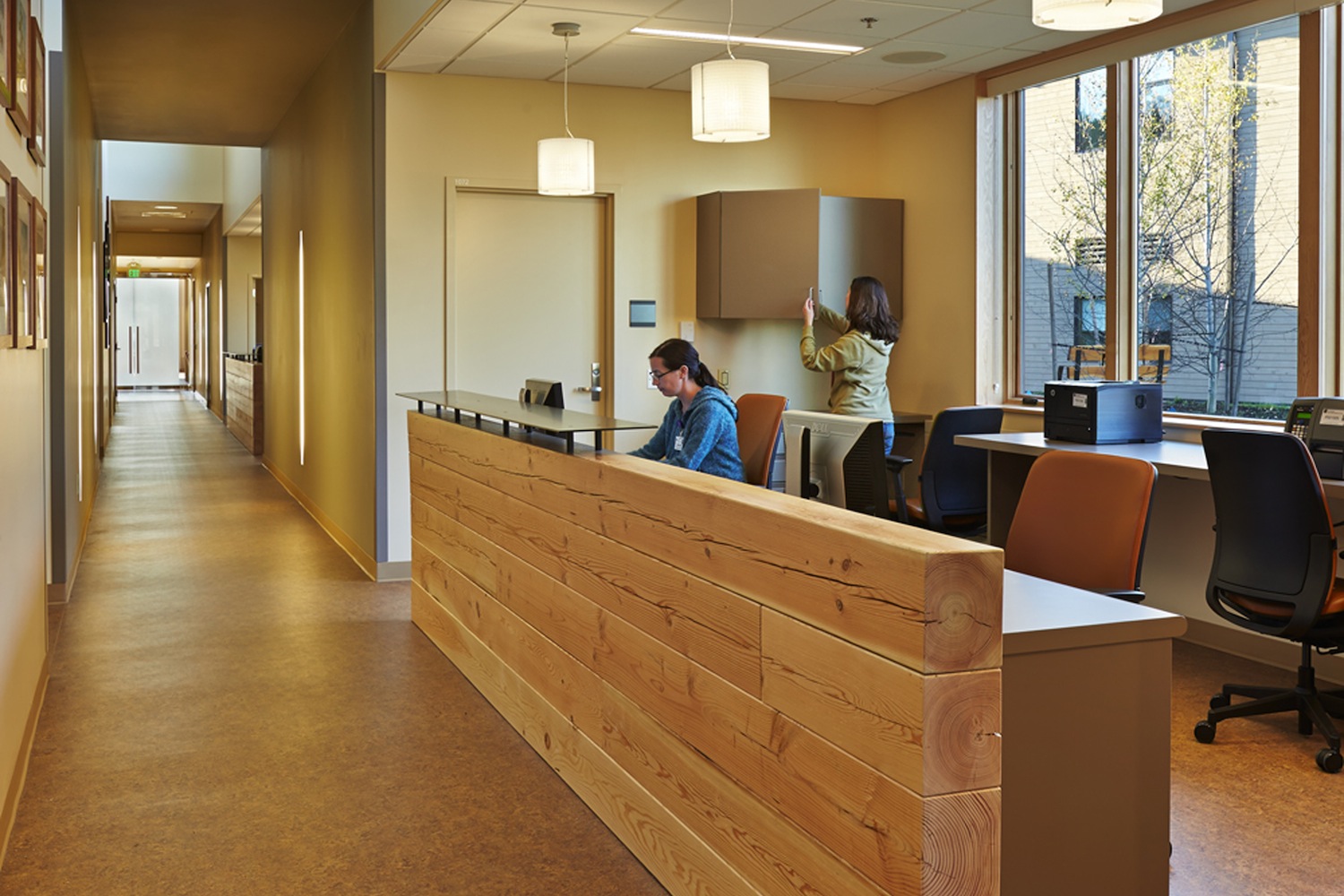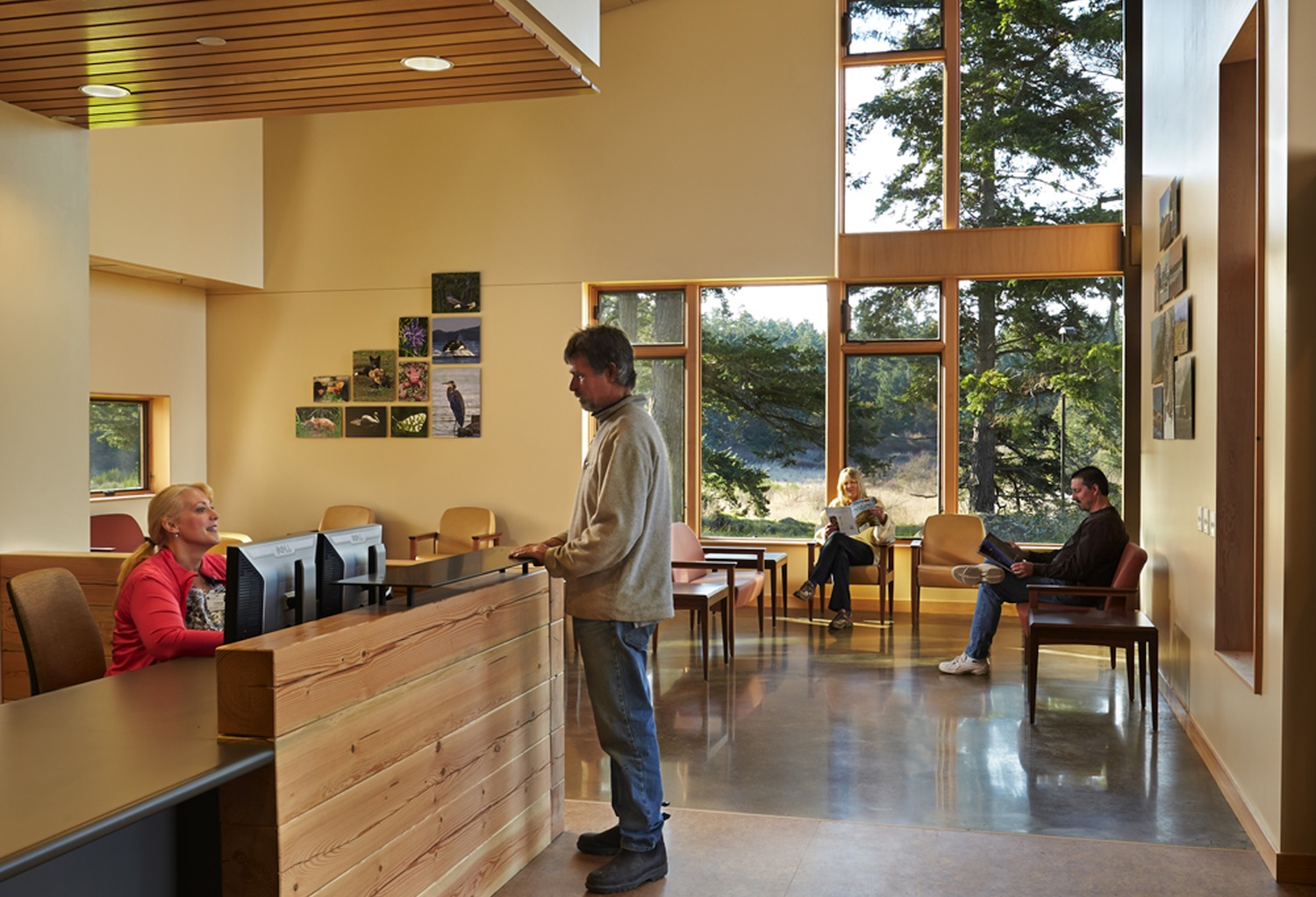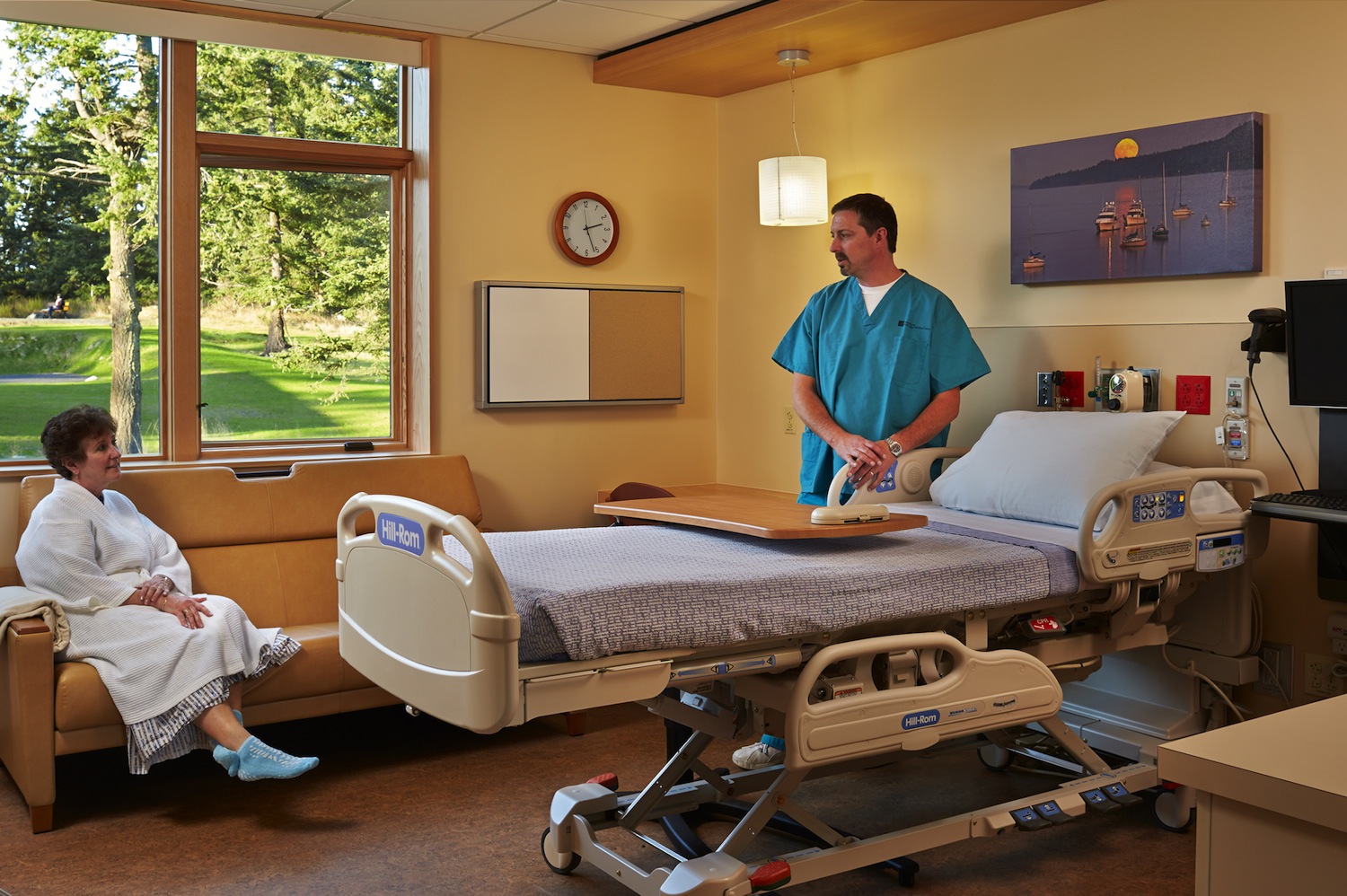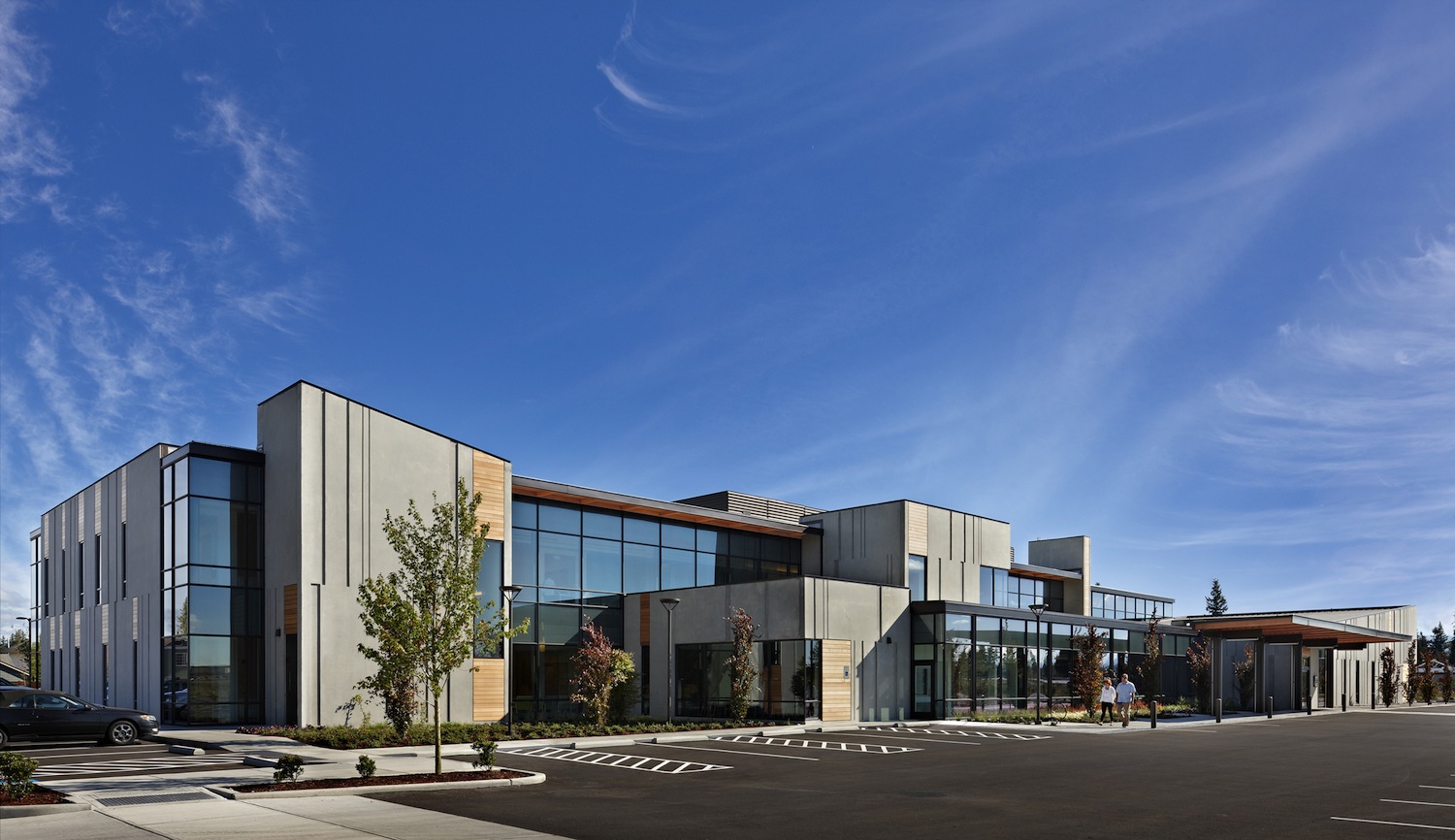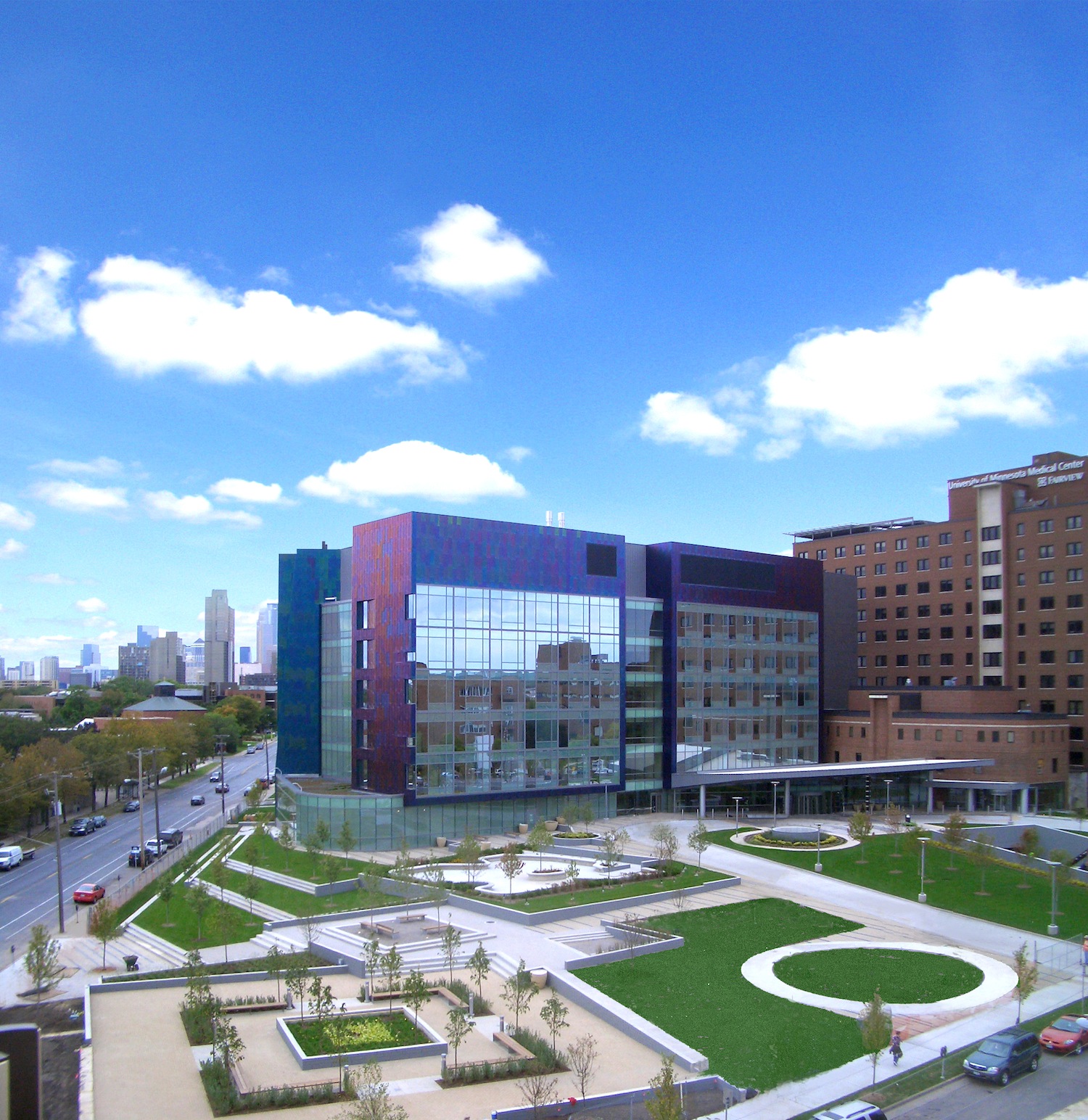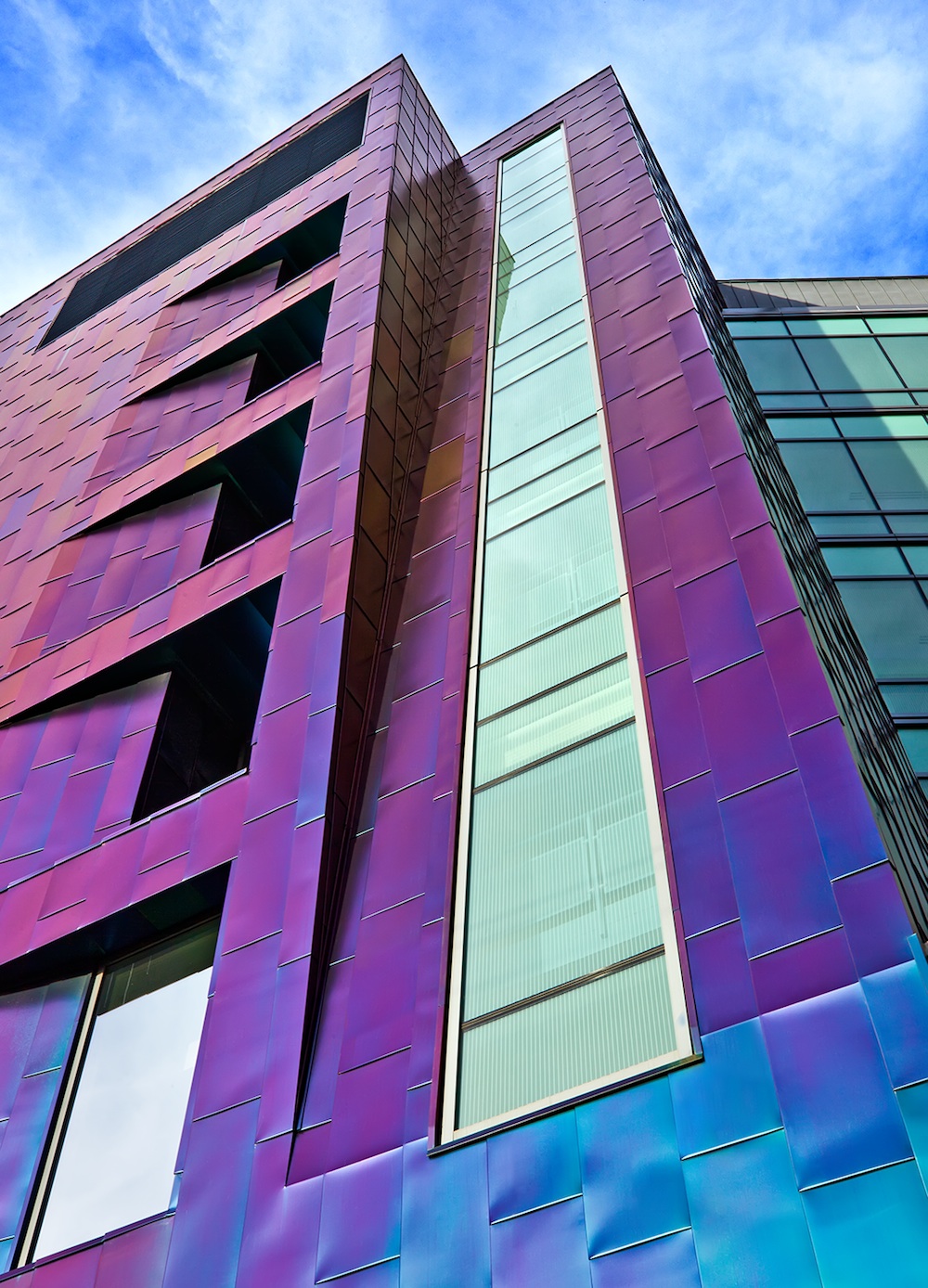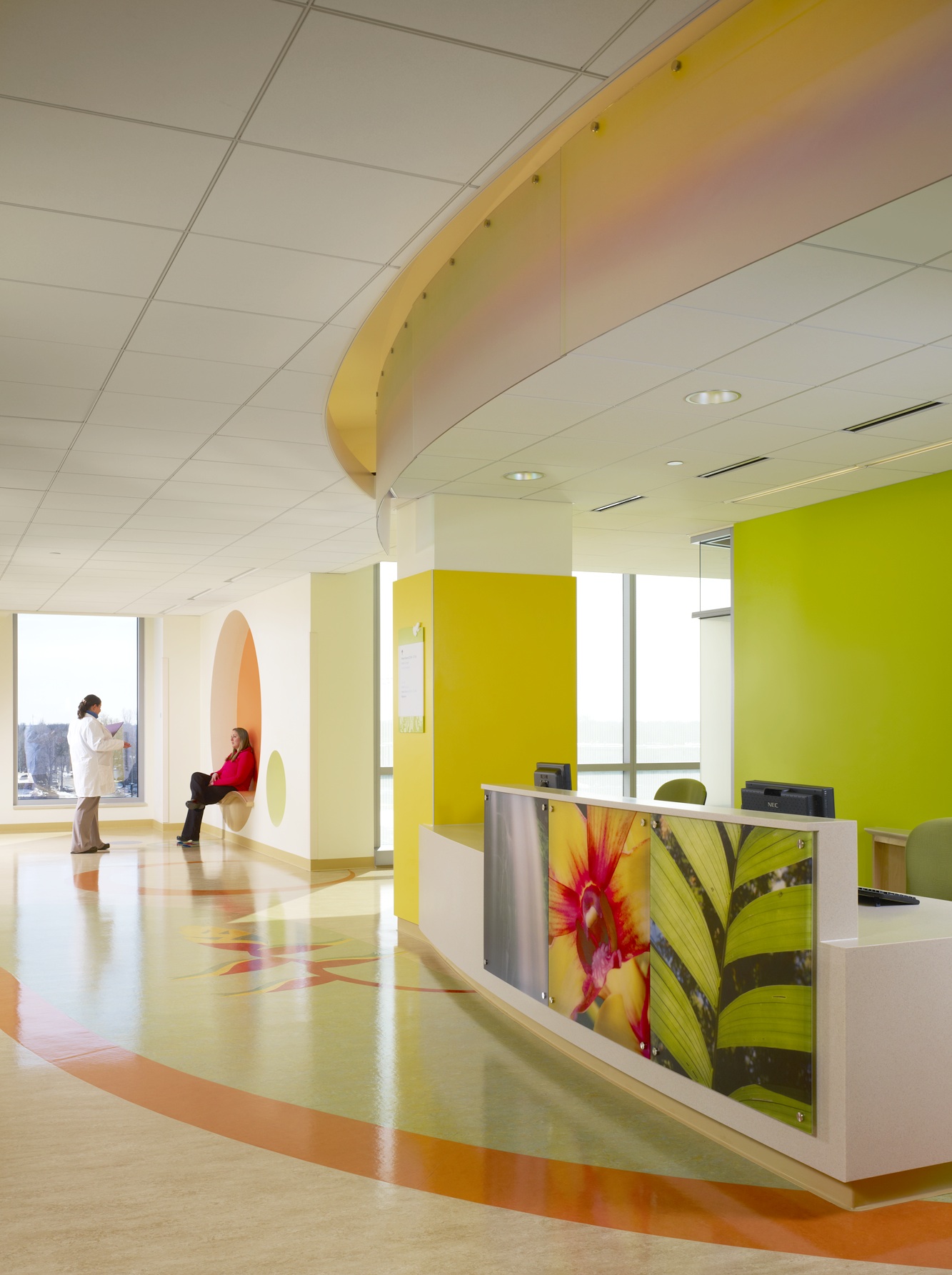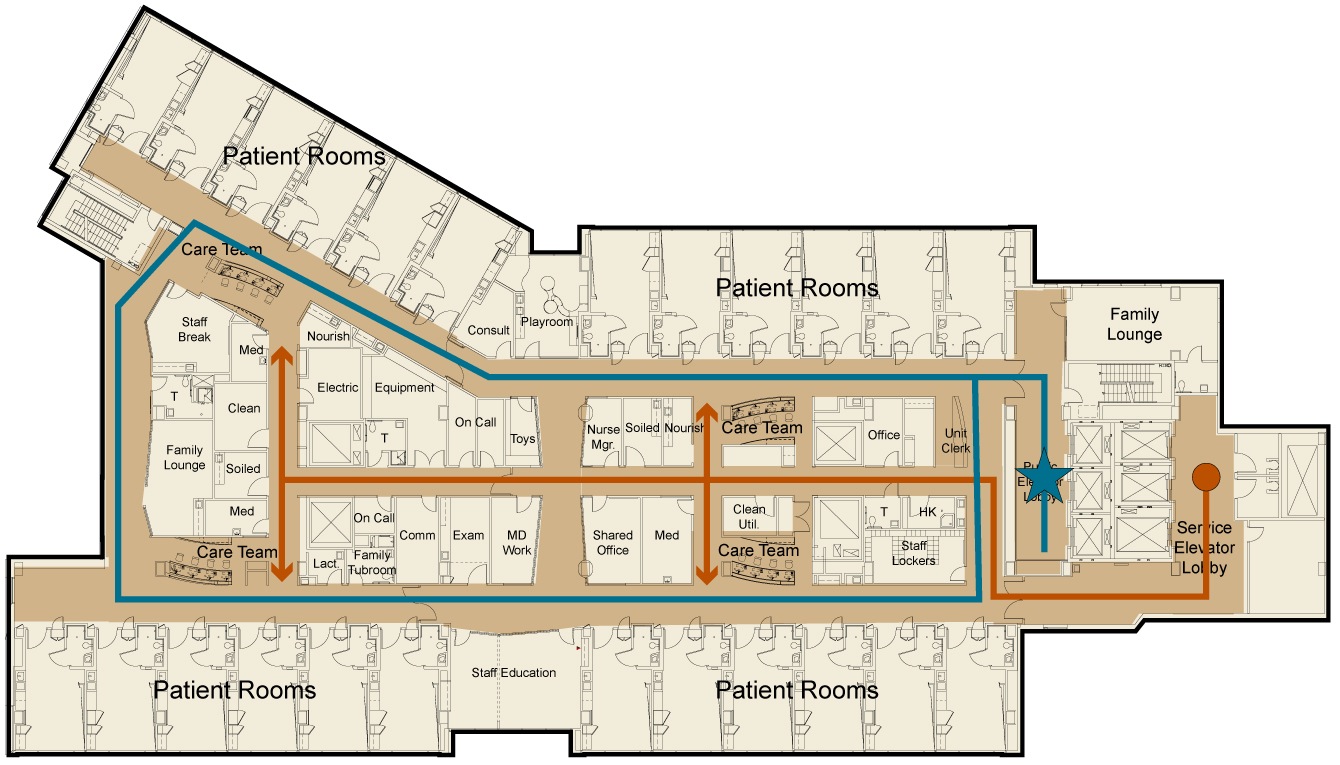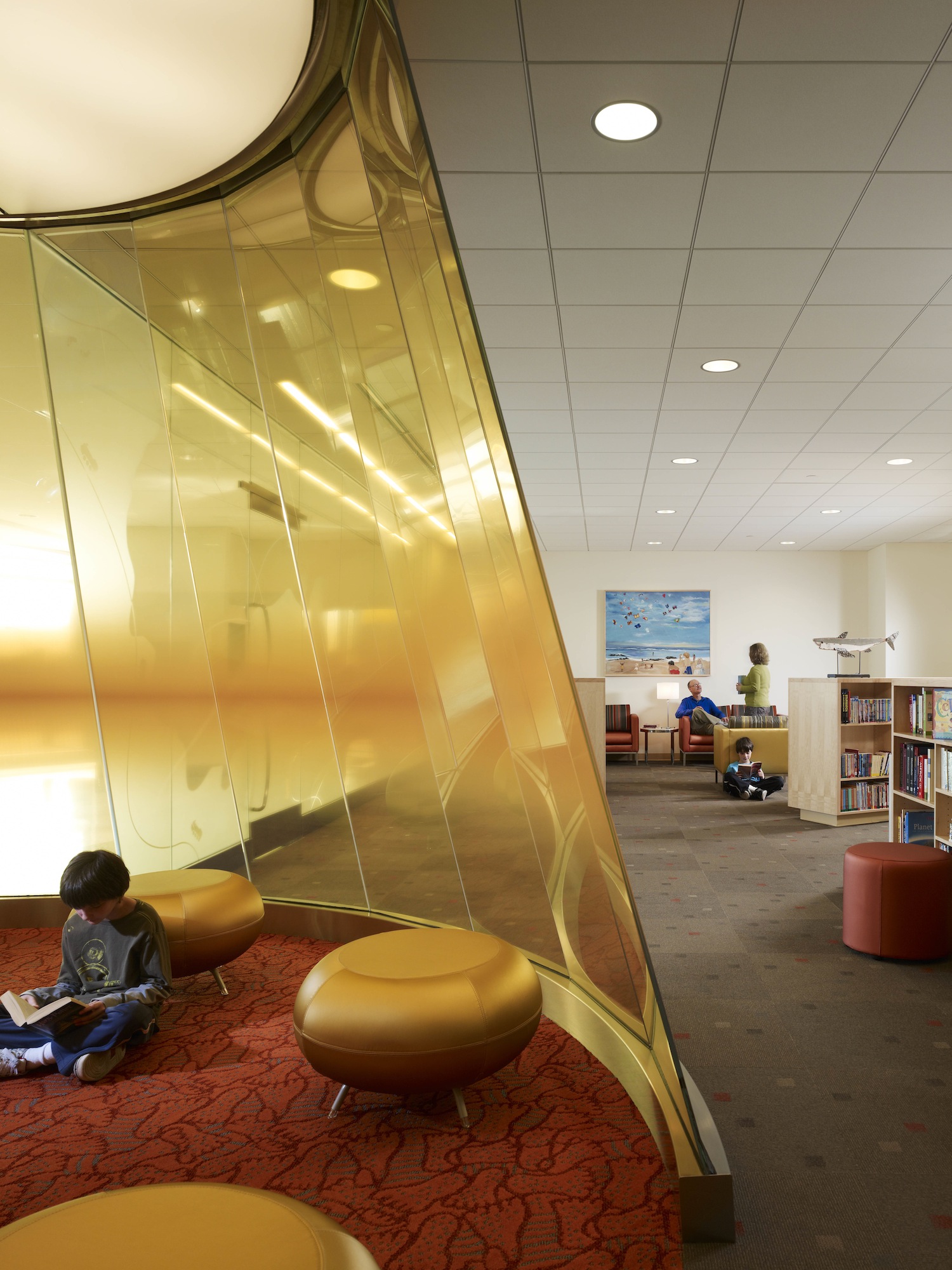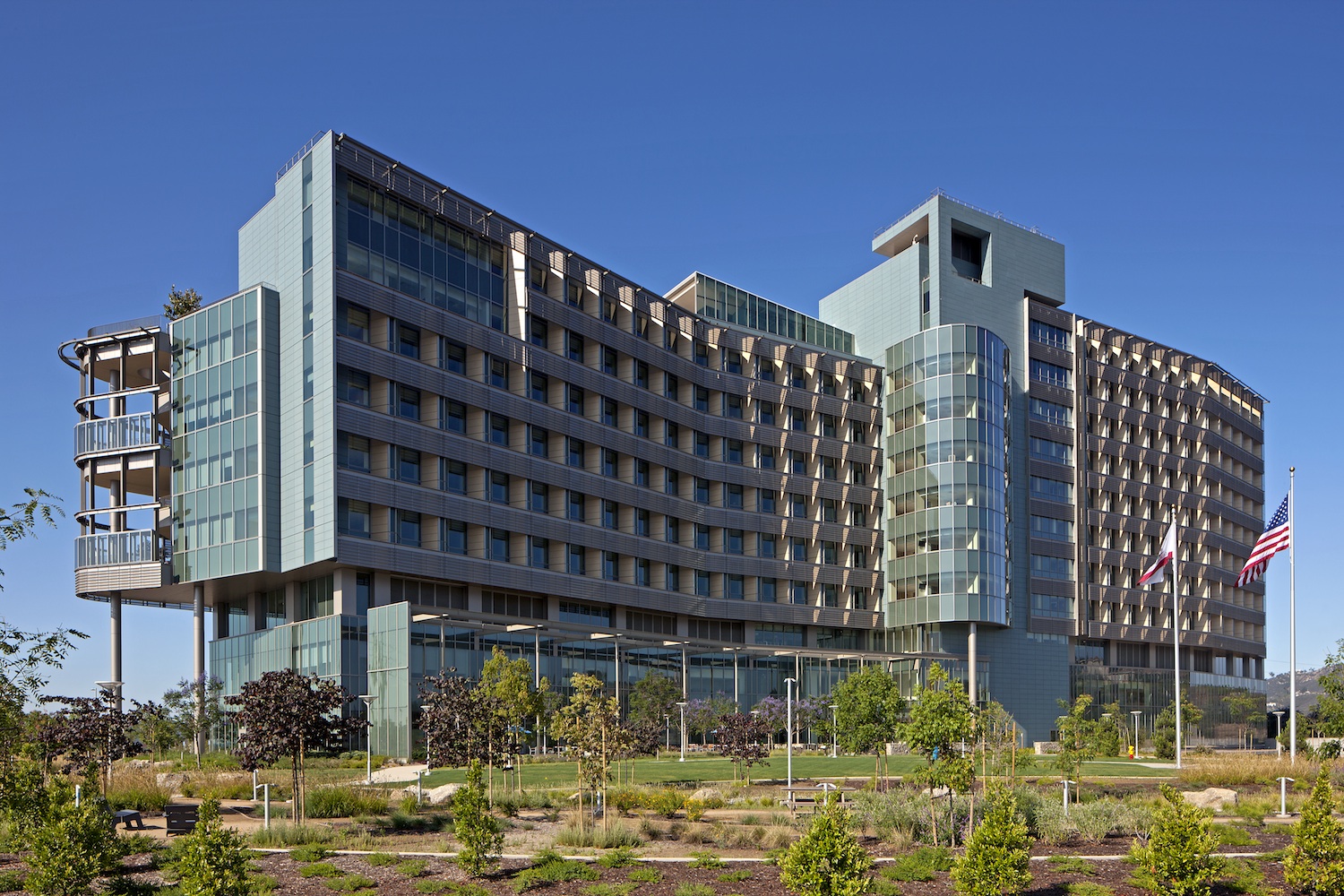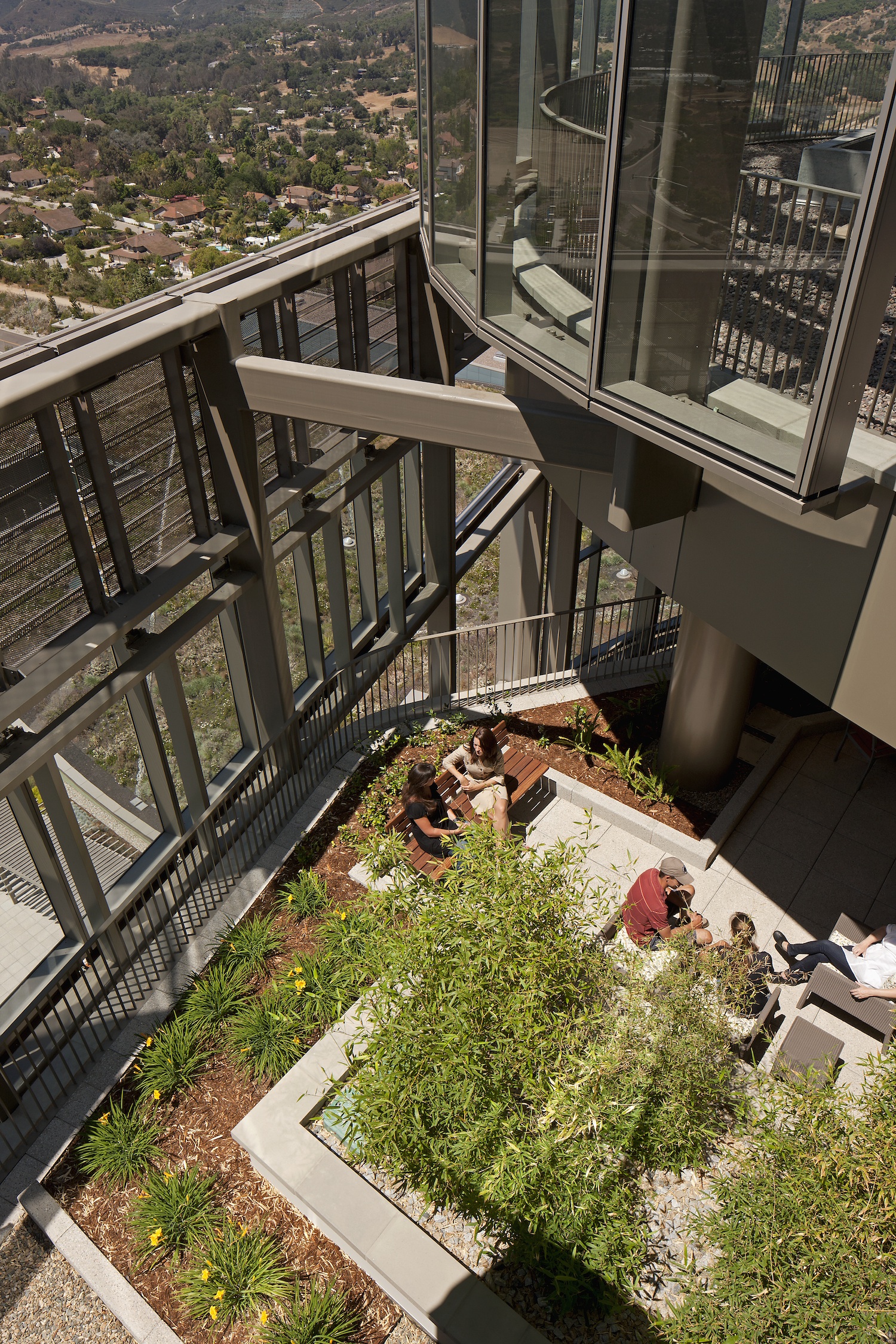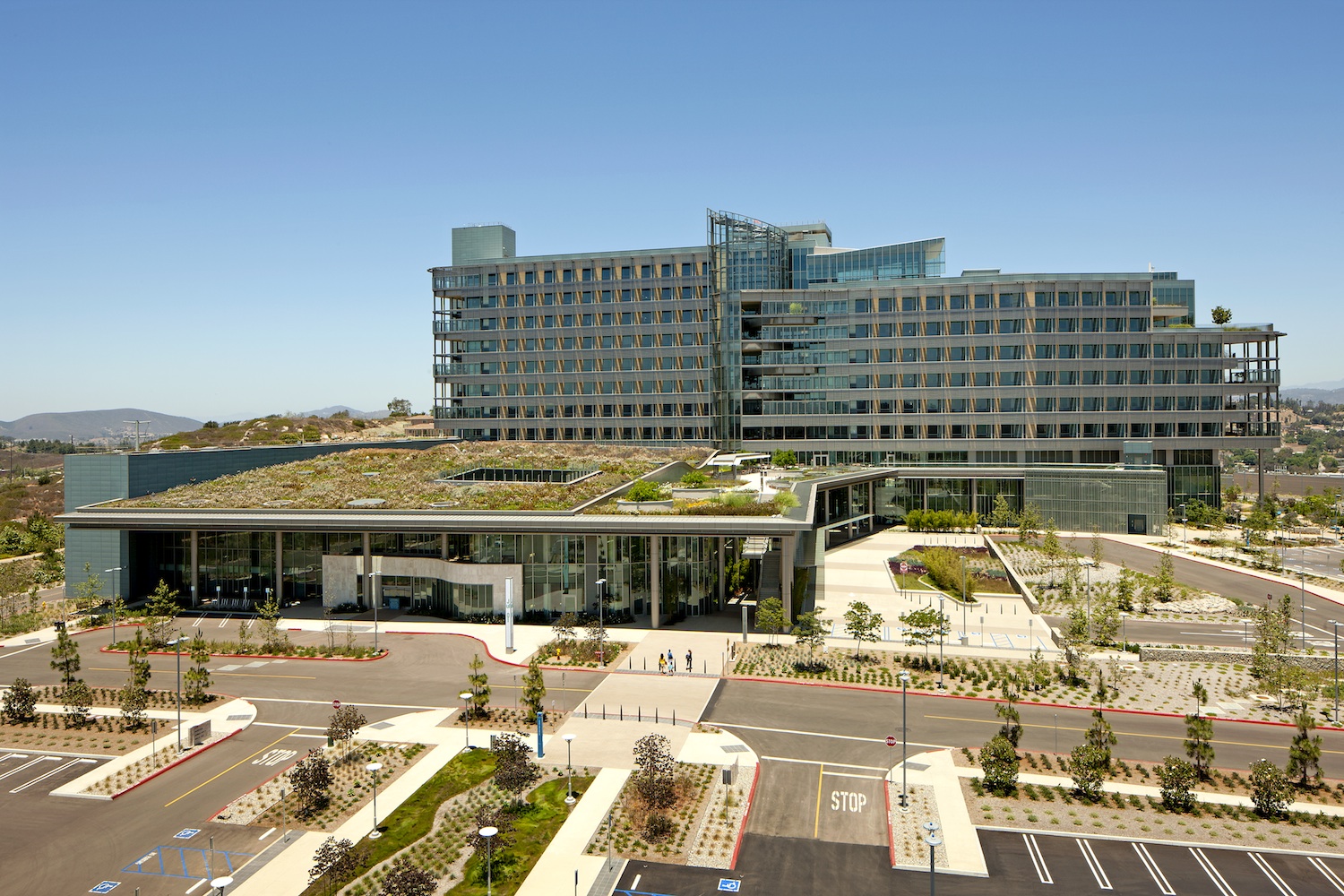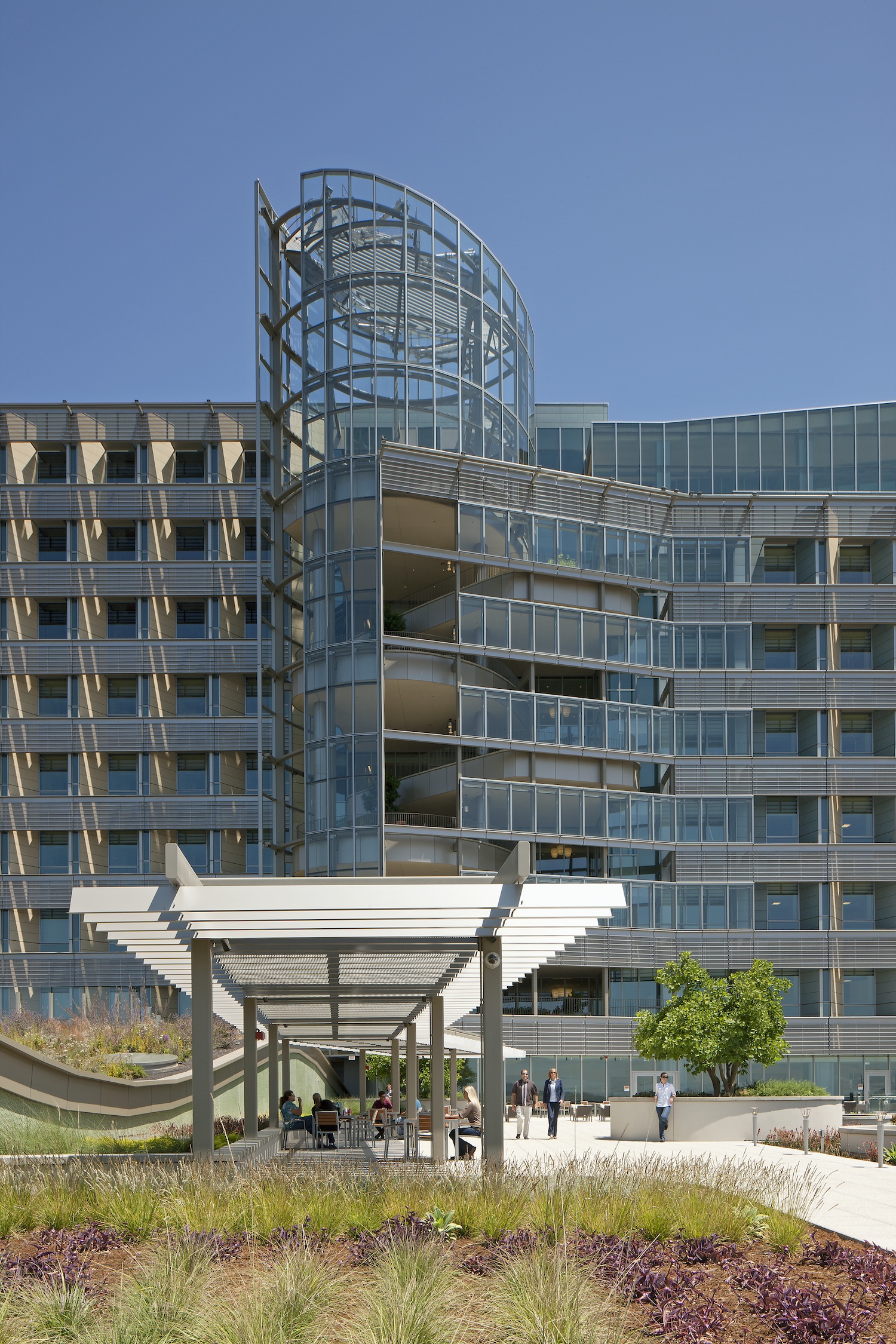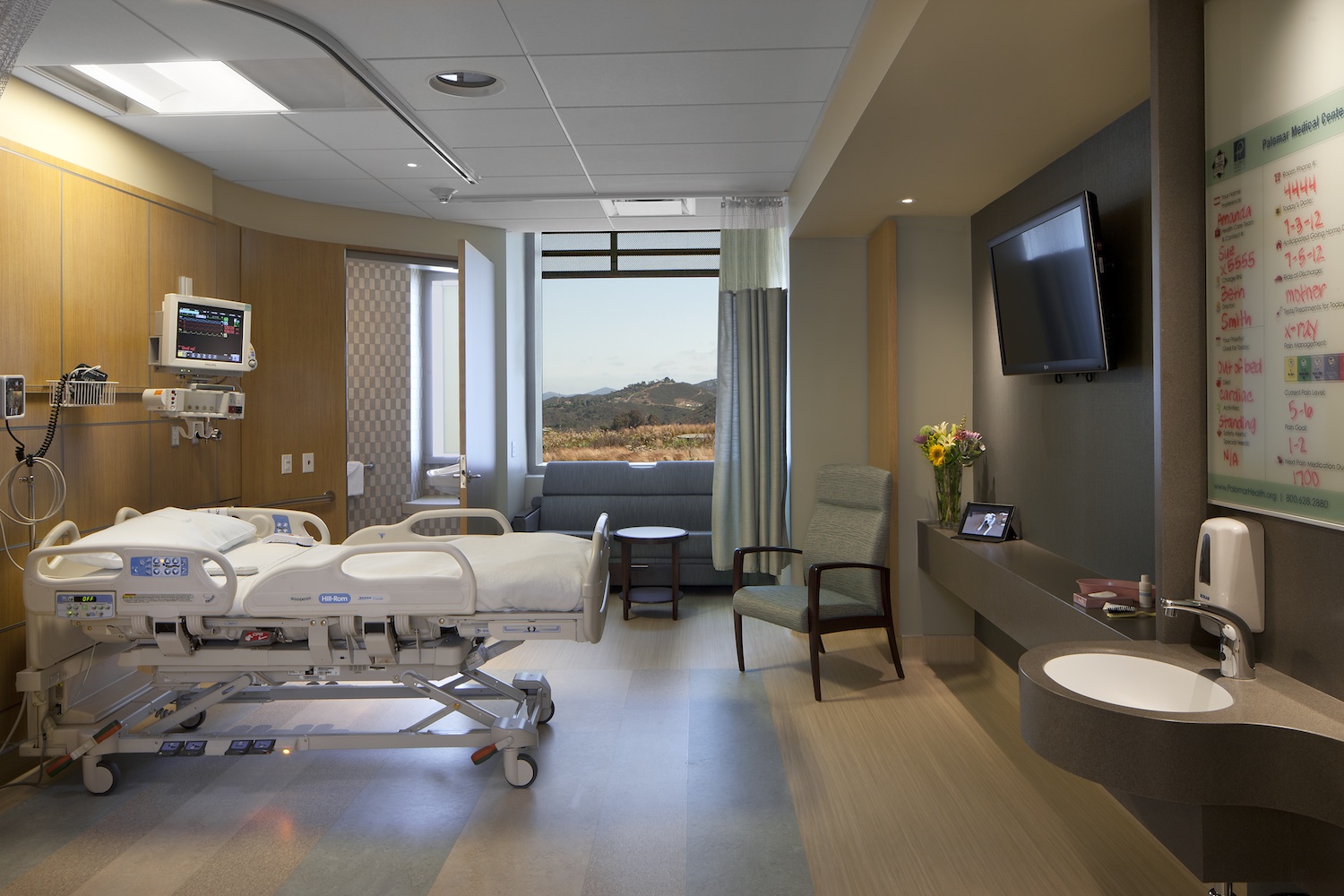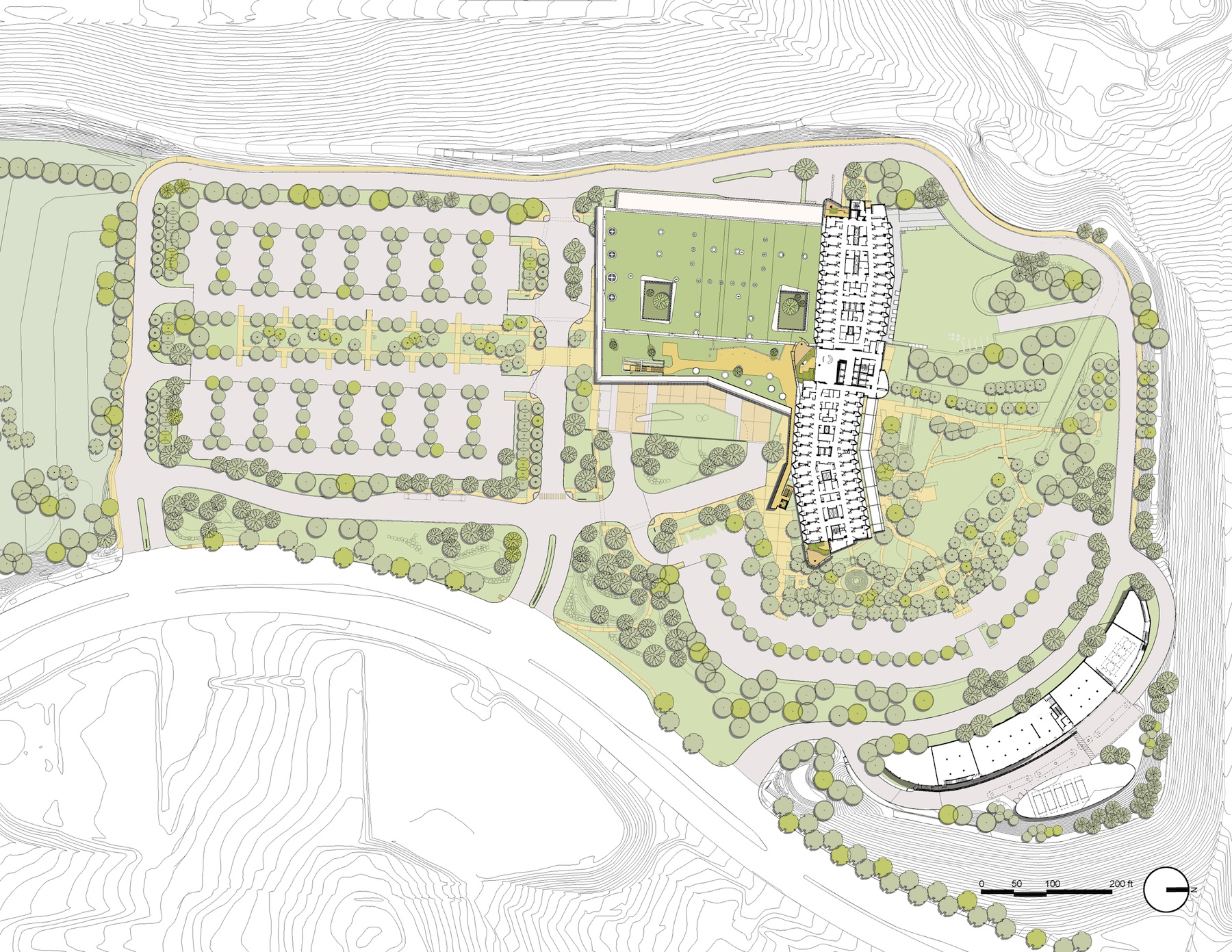Category A: Built, Less than $25 million in construction cost
1. UCLA Outpatient Surgery and Oncology Center; Santa Monica, California
Michael W. Folonis Architects
This outpatient surgery, oncology treatment and medical office facility asserts that a more-natural and less-clinical environment promotes healing in patients and productive behavior in medical staff. The architects sought the maximum inclusion of natural lighting and ventilation, and an enhanced indoor-outdoor connection. The design concept is inspired by the belief that principles of Modernism are the ideal means to realize the high standards of sustainability in healthcare design. The design achieves an aesthetic ideal, while delivering a patient-focused healing environment, the utility required by the owner, and the requirements for Gold LEED certification. This is the only project to win AIA-AAH Awards in both on-the-boards and built categories. Photos: Tom Bonner
2. Peace Island Medical Center; Friday Harbor, San Juan Island, Washington
Mahlum
Peace Island Medical Center began with a remote island community uniting to realize their vision of rural healthcare in the San Juan Islands. The hospital melds discreetly into the old-growth forest, basalt slopes and wetlands. Island resources are extremely limited, making sustainable choices fundamental. Naturally ventilated clinical areas and patient rooms connect occupants with fresh air and drive down energy use. The design reflects the values of the caregivers and community, embodying humility, environmental sensitivity and innovation. The Living Building Challenge served as a roadmap for sustainable initiatives, decoupled mechanical systems, greatly reduced potable water use and minimal energy use. Photos: Courtesy Mahlum
3. Adamsville Regional Health Center; Atlanta
Stanley Beaman & Sears
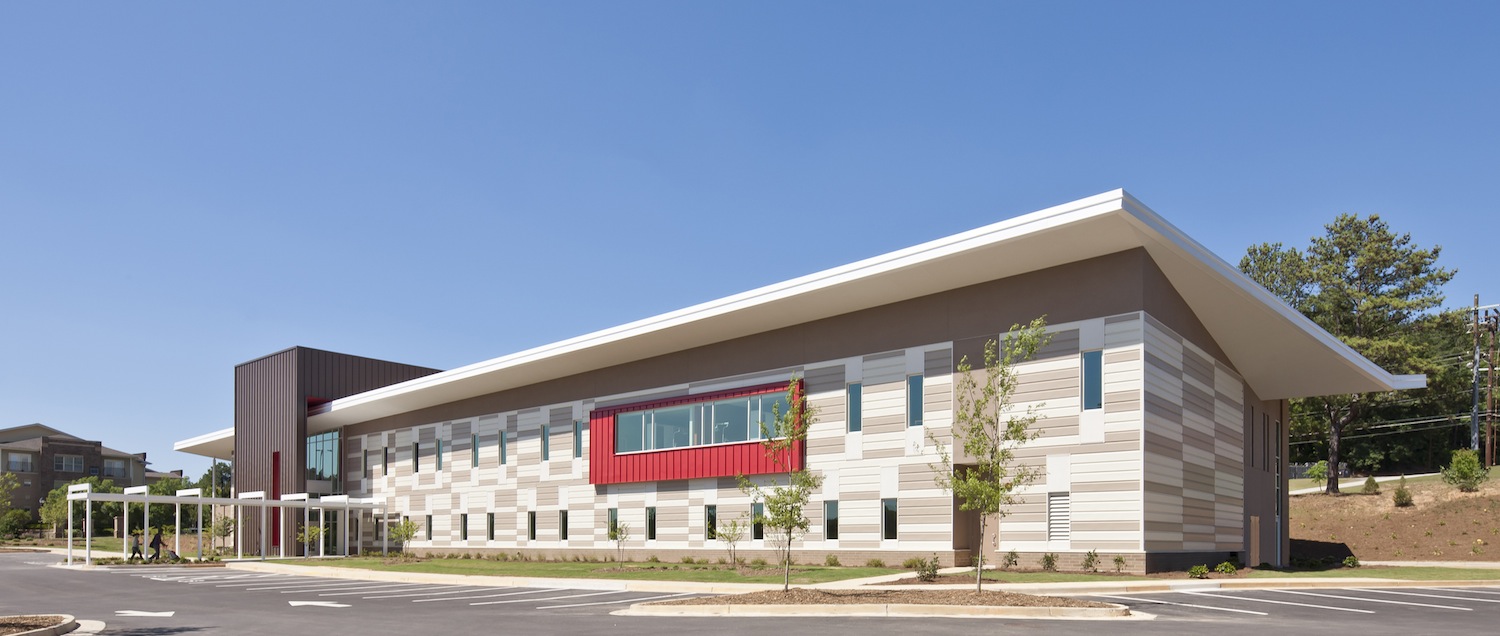
The 34,000-square-foot building houses a primary care clinic, a behavioral health clinic, childcare facilities, a dental clinic and a workforce community center. The co-location of these functions led the design team to consider the communal folk art of quilting and inspiration also came from the constructed paintings of contemporary Atlanta artist Radcliffe Bailey, who pieces together found objects, archival photographs and historic imagery with jazz-like effects. The design-build, fast-track project was completed, from start to finish, in 275 days. It required coordinating the participation of multiple stakeholders including the City of Atlanta and Fulton County governments, the contracting firm Whiting-Turner, Fulton County Board of Commissioners Vice Chair Emma Darnell, the Fulton County Office of Cultural Affairs, the staff of West End Medical Center and residents of the Adamsville neighborhood. Photos: Jonathan Hillyer
4. The Everett Clinic Smokey Point Medical Center; Smokey Point, Washington
ZGF Architects LLP

Photo: Benjamin Benschneider
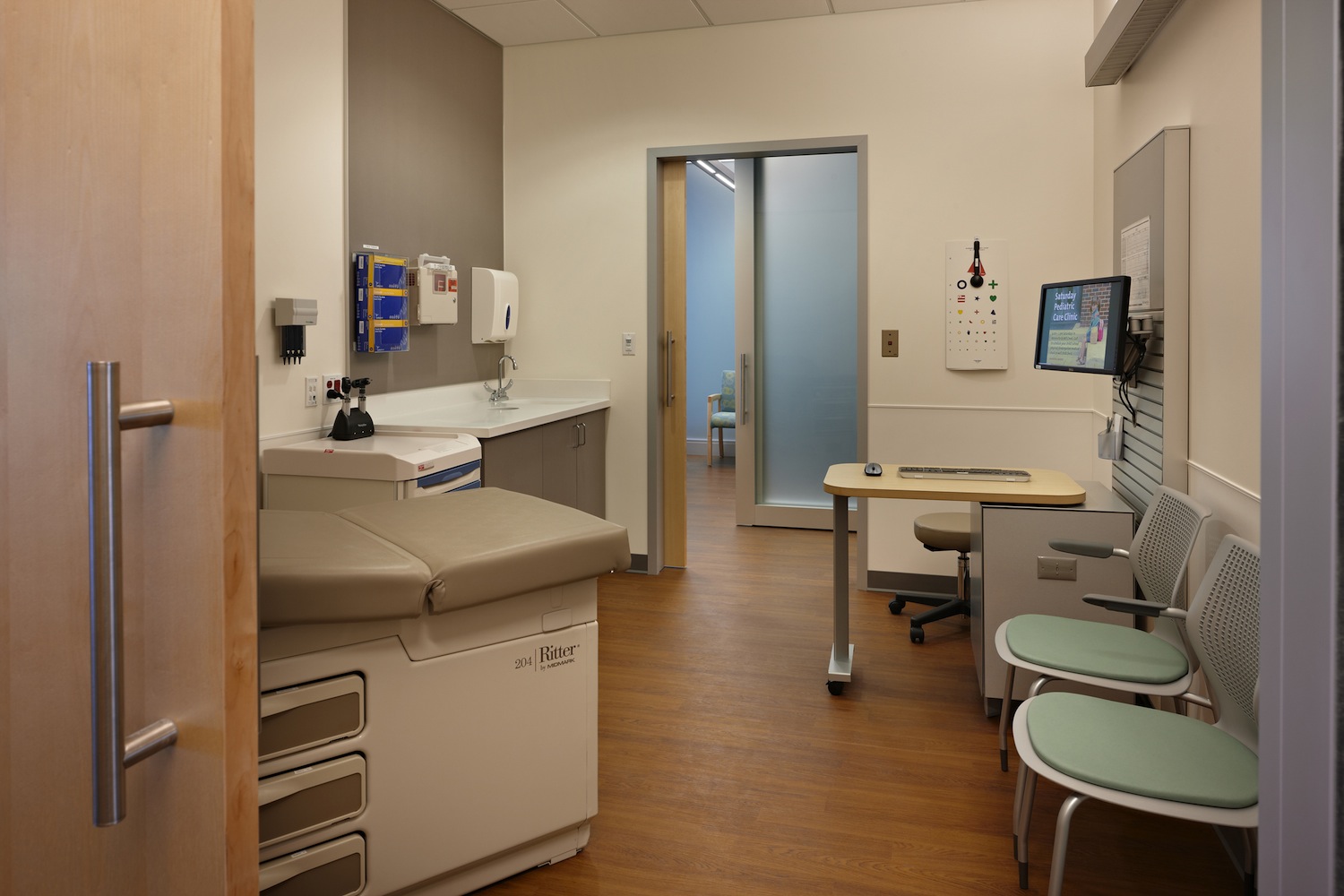
Photo: Doug Scott
Category B: Build, More than $25 million in construction cost
5. University of Minnesota Amplatz Children’s Hospital; Minneapolis, Minnesota
Tsoi/Kobus & Associates
The University of Minnesota Amplatz Children’s Hospital started with a vision: to create the ideal environment in which to provide and receive children’s healthcare. Today, the hospital is setting new standards for safety, comfort, and clinical efficiency. The six-story building consolidates the pediatric programs and inpatient units. It includes 96 same-handed, private inpatient rooms, a sedation/observation unit, dialysis unit, pediatric emergency department, an expansion of the existing imaging department and surgical suite, family resource center, gift shop, and underground parking. The building creates a distinctive identity for the hospital, immediately engaging visitors with its bright and playful exterior of multi-colored stainless steel panels. An interactive interior design theme, “Passport to Discovery,” enlivens the interior, aids in wayfinding, and offers opportunities for diversion and discovery. Photos: Nick Merrick, Hedrich Blessing; Drawings: TK&A
6. Palomar Medical Center; Escondido, California
CO Architects
Nationally recognized for its innovative approach to sustainable design, healing environments and technical execution, Palomar Medical Center is the first phase of development of a new 35-acre campus that includes the 360-bed acute-care hospital and a new central plant. Innovations in medical planning and architectural design meet the project goals of improving access to care, improving operational efficiencies, and creating sustainable, high-performance healing environments. Design strategies incorporate garden spaces at every level of the 11-story nursing tower, and utilize green-roof technology that extends the landscape and improves views from the patient rooms. The design includes a full complement of water conservation, air quality, and energy-saving measures. Photos: Tom Bonner
CONTINUE ARTICLE (READ ABOUT PROJECTS #7-12)
Related Stories
Office Buildings | Mar 8, 2024
Conference room design for the hybrid era
Sam Griesgraber, Senior Interior Designer, BWBR, shares considerations for conference room design in the era of hybrid work.
Architects | Mar 8, 2024
98 architects elevated to AIA's College of Fellows in 2024
The American Institute of Architects (AIA) is elevating 96 member-architects and 2 non-member-architects to its College of Fellows, an honor awarded to architects who have made significant contributions to the profession. The fellowship program was developed to elevate architects who have achieved a standard of excellence in the profession and made a significant contribution to architecture and society on a national level.
Sports and Recreational Facilities | Mar 7, 2024
Bjarke Ingels’ design for the Oakland A’s new Las Vegas ballpark resembles ‘a spherical armadillo’
Designed by Bjarke Ingels Group (BIG) in collaboration with HNTB, the new ballpark for the Oakland Athletics Major League Baseball team will be located on the Las Vegas Strip and offer panoramic views of the city skyline. The 33,000-capacity covered, climate-controlled stadium will sit on nine acres on Las Vegas Boulevard.
Adaptive Reuse | Mar 7, 2024
3 key considerations when converting a warehouse to a laboratory
Does your warehouse facility fit the profile for a successful laboratory conversion that can demand higher rents and lower vacancy rates? Here are three important considerations to factor before proceeding.
Shopping Centers | Mar 7, 2024
How shopping centers can foster strong community connections
In today's retail landscape, shopping centers are evolving beyond mere shopping destinations to become vibrant hubs of community life. Here are three strategies from Nadel Architecture + Planning for creating strong local connections.
Market Data | Mar 6, 2024
Nonresidential construction spending slips 0.4% in January
National nonresidential construction spending decreased 0.4% in January, according to an Associated Builders and Contractors analysis of data published today by the U.S. Census Bureau. On a seasonally adjusted annualized basis, nonresidential spending totaled $1.190 trillion.
MFPRO+ Special Reports | Mar 6, 2024
Top 10 trends in senior living facilities for 2024
The 65-and-over population is growing faster than any other age group. Architects, engineers, and contractors are coming up with creative senior housing solutions to better serve this burgeoning cohort.
Architects | Mar 5, 2024
Riken Yamamoto wins 2024 Pritzker Architecture Prize
The Pritzker Architecture Prize announces Riken Yamamoto, of Yokohama, Japan, as the 2024 Laureate of the Pritzker Architecture Prize, the award that is regarded internationally as architecture’s highest honor.
Office Buildings | Mar 5, 2024
Former McDonald’s headquarters transformed into modern office building for Ace Hardware
In Oak Brook, Ill., about 15 miles west of downtown Chicago, McDonald’s former corporate headquarters has been transformed into a modern office building for its new tenant, Ace Hardware. Now for the first time, Ace Hardware can bring 1,700 employees from three facilities under one roof.
Green | Mar 5, 2024
New York City’s Green Economy Action Plan aims for building decarbonization
New York City’s recently revealed Green Economy Action Plan includes the goals of the decarbonization of buildings and developing a renewable energy system. The ambitious plan includes enabling low-carbon alternatives in the transportation sector and boosting green industries, aiming to create more than 12,000 green economy apprenticeships by 2040.


